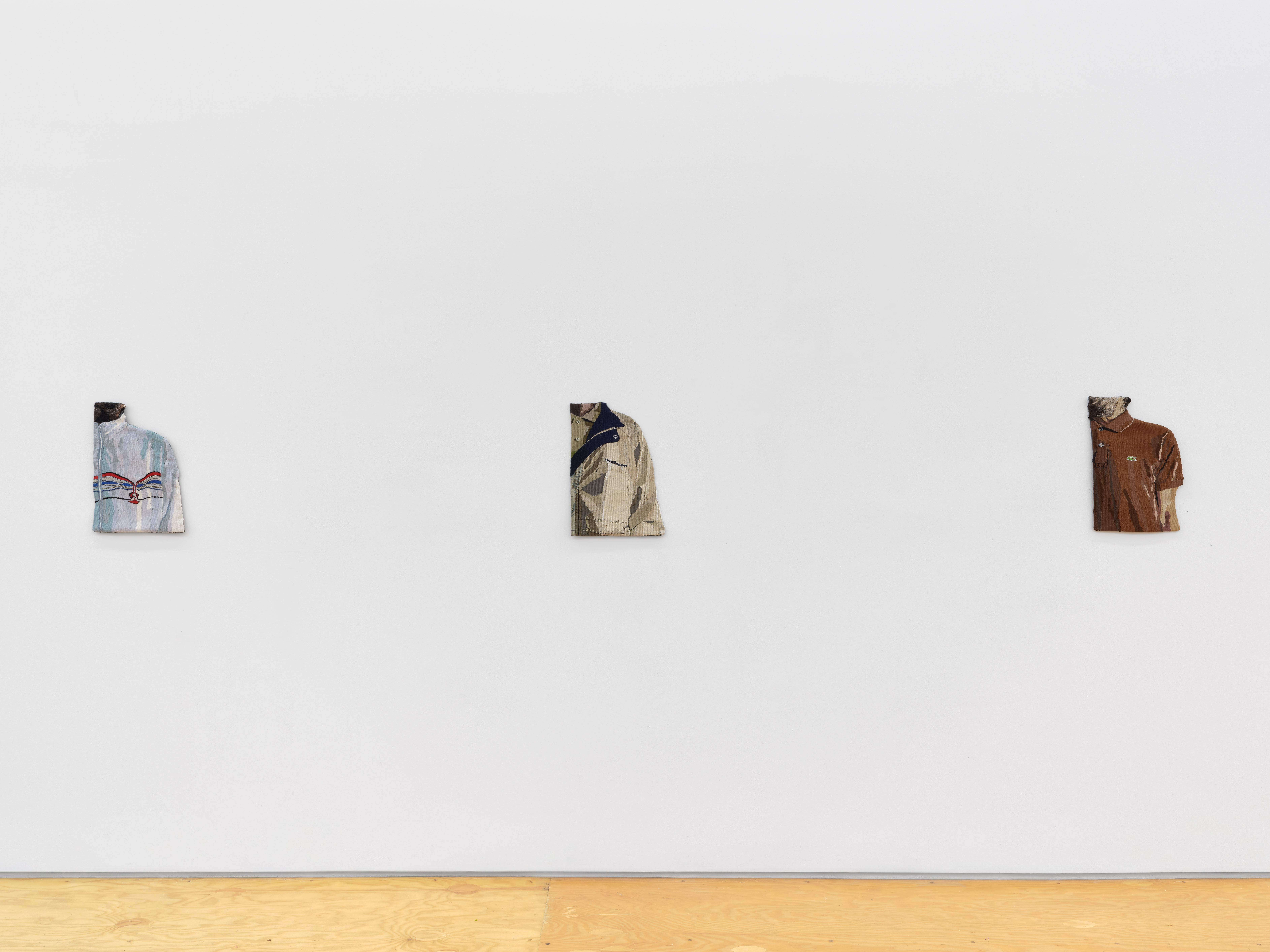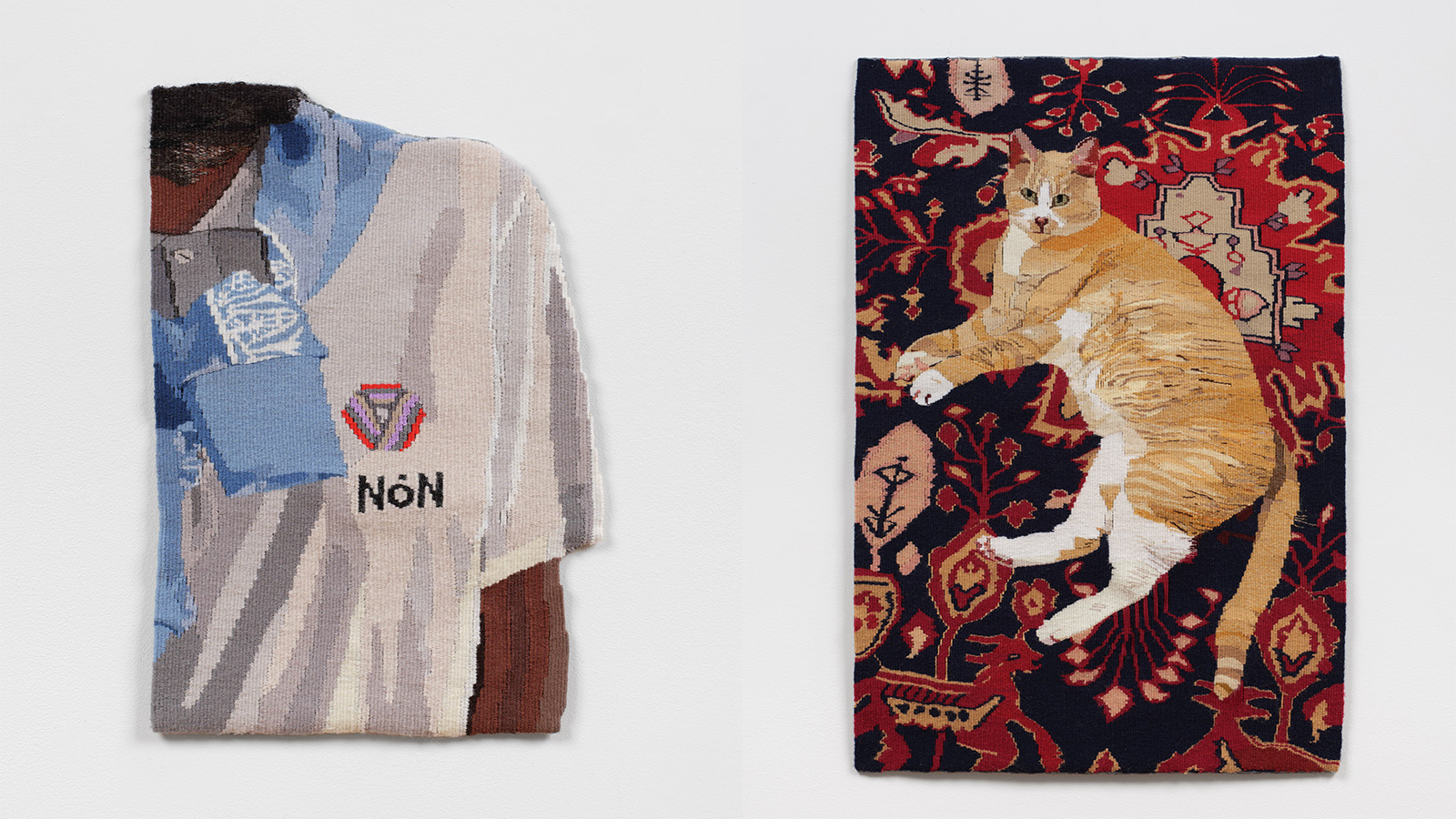
Since the early days of military regalia, displays of social standing have adorned a specific part of the body: the left breast. Emblems and medals were worn over this spot because – for left-to-right readers – that’s where our gaze tends to land. Modern brands have continued this attention-grabbing tradition, and commonly opt to position their logos on garments in the same place, which also happens to be over the heart. Brand affiliation immediately presents to others something about who we are (or who we aspire to be), and logos have therefore become intrinsically linked with identity and self-expression. So the left breast is effectively prime advertising real-estate for ourselves.
Elizabeth Radcliffe’s beguiling tapestries
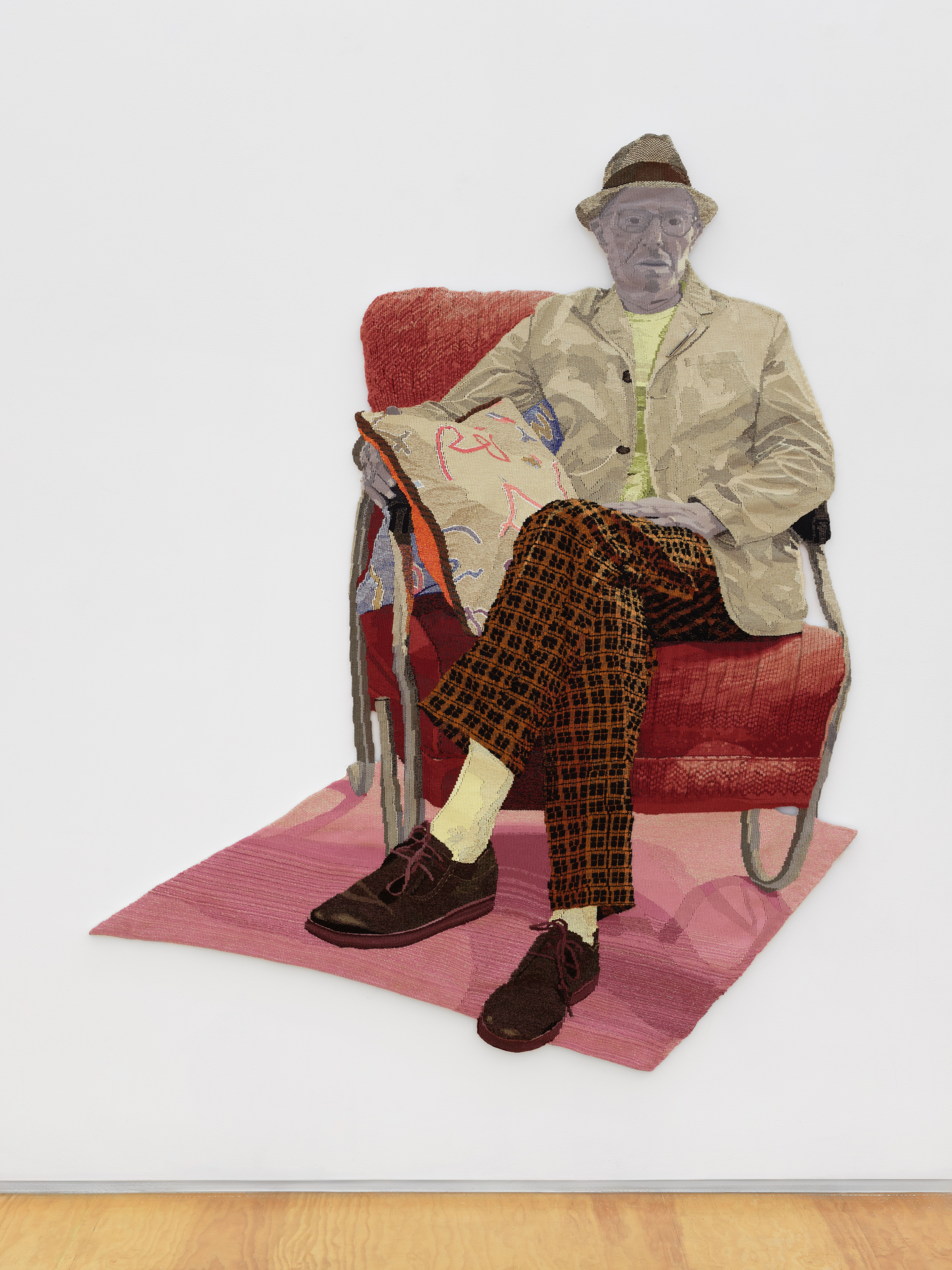
It’s this phenomenon that Scottish artist Elizabeth Radcliffe explores via a series of tapestries that hone in on this area of the body, depicting the logos and wordmarks of apparel brands upon their wearer – but without giving away anything else about them. She renders the same 17.7in by 11.4in corner of the body – from neck to ribs; breastbone to shoulder – through the ancient artform of wool weaving, showing contemporary cultural signifiers through a medium more commonly associated with the medieval period.
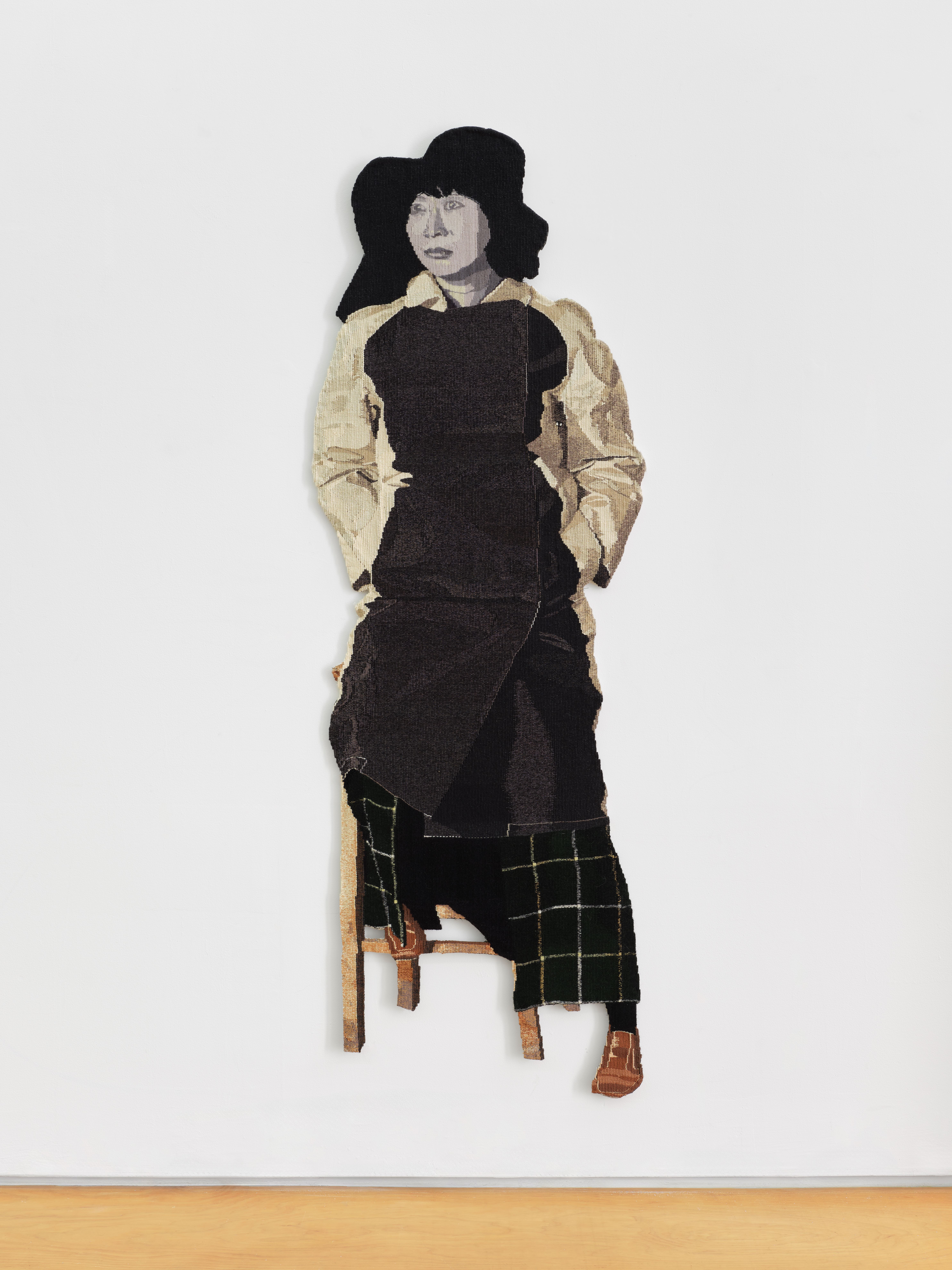
Radcliffe’s inquiry into the significance of branded attire began four decades ago with waxed motorcycle jackets and workwear, but has recently shifted to tennis apparel, recognising activewear’s rise to cultural dominance as the preferred vessel of self-expression for younger generations. 'In each, a garment points to the sartorial sensibility of its wearer, and provides a set of material conditions that form the basis of Radcliffe’s inquiry,' says a statement from New York gallery Margot Samel, which is hosting a solo exhibition of the artist’s work at its space in Tribeca – her first in the US, and which conveniently opened during the US Open tennis competition.

Radcliffe’s tapestries are mounted on the gallery’s stark white walls, extrapolated from any context for examination in a neutral, abstract setting. Each of the pieces that depict iconic tennis wear, including a Lacoste polo shirt with its stylised crocodile, are presented widely spaced apart in a row at the approximate height they would be on the wearer. The older works are hung opposite, also side by side, allowing the viewer to draw immediate comparisons between them. All show the pleats of fabric, the buttons, zippers, stitching and the logos themselves in realistic detail, and are strikingly different in colour.
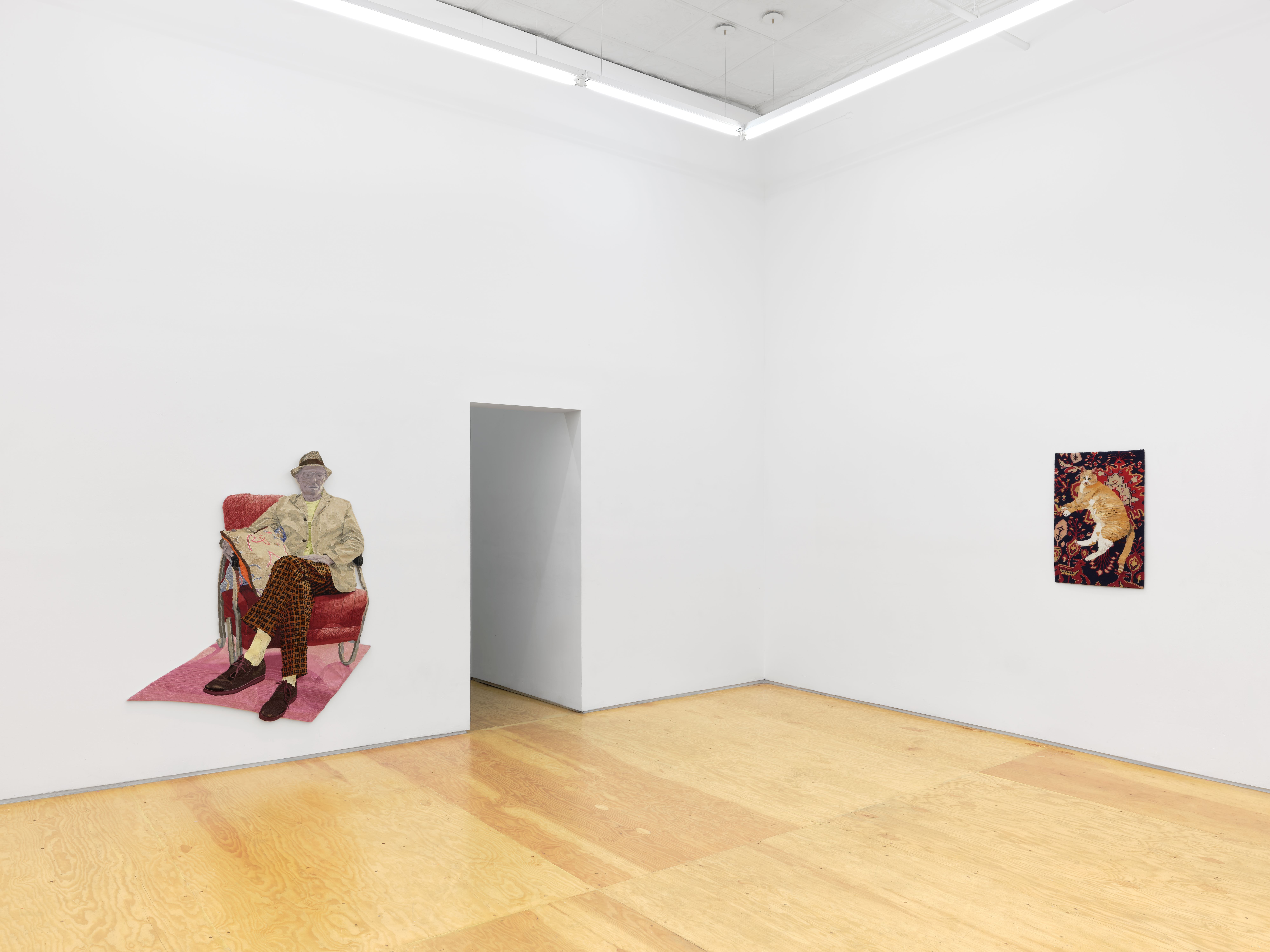
The exhibition also includes other works by Radcliffe in the same medium. Two larger tapestries display full figures, both seated and with their faces identifiable. The first is a portrait from 2015 of fellow Edinburgh-based artist Marc Camille-Chaimowicz, relaxed in an armchair and wearing a fedora and chequered trousers. His casual cross-legged pose and the warm red and beige palette contrast with the other full portrait, created in 2012 and depicting artist Youngjoo Yoo, who is perched somewhat uncomfortably on a stool and rendering primarily in dark grey and desaturated hues. Both silhouettes are mounted off the ground, suspended against the sea of white, again removing their original context, in order to be examined without distraction.
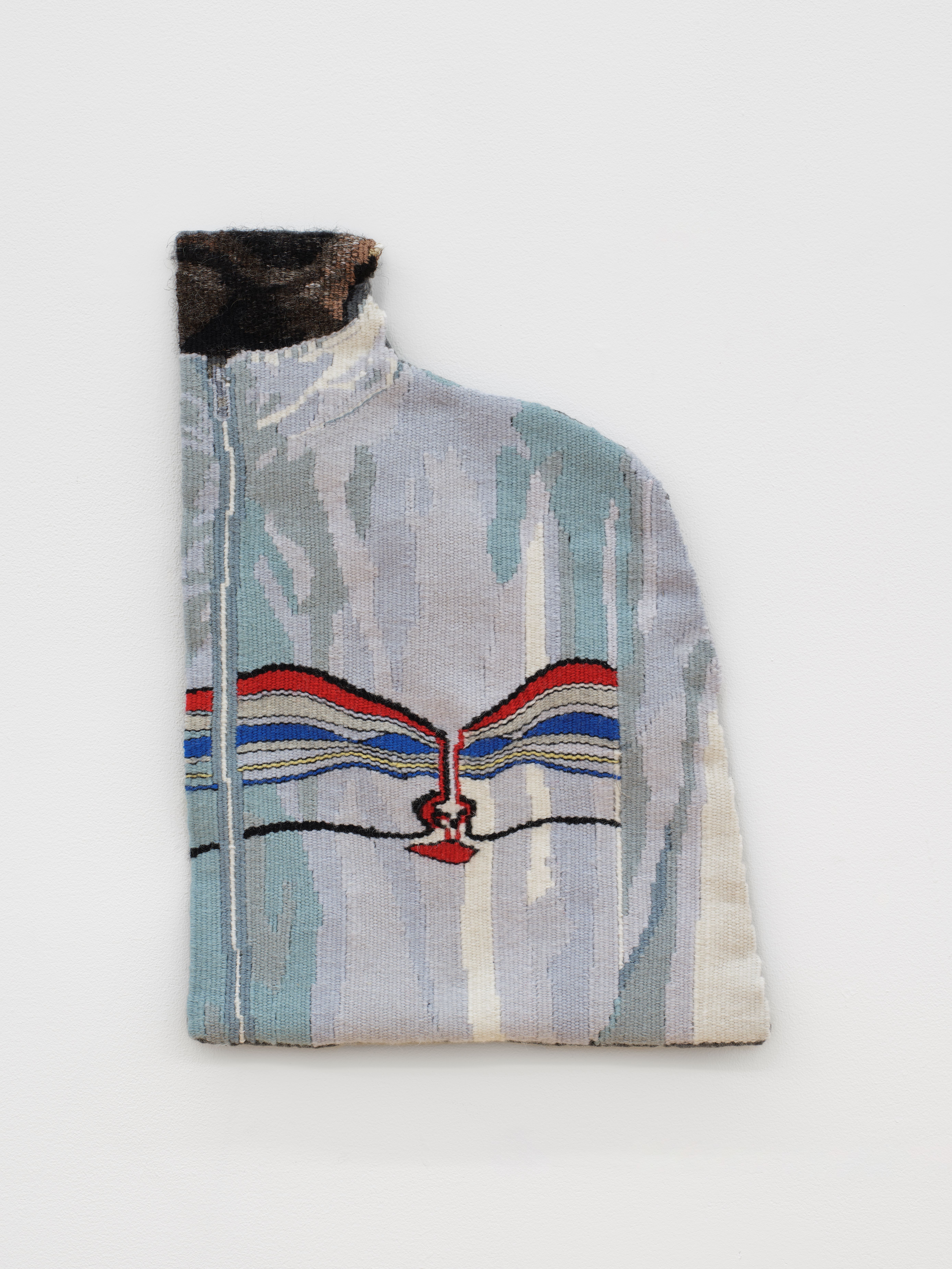
Finally, another new work shows a cat laid on a vintage patterned rug, linking back to the common association between domesticity and traditions like weaving, a theme that recurs in Radcliffe’s work – in some cases more blatantly than others.
It’s notable that each of the tapestries requires hundreds of hours of studied, repetitive weaving to complete; they serve as acts of dedication that memorialise moments in her life, as well as in wider culture. Also striking is Radcliffe’s application of trompe l’oeil effects through intricate craftwork, giving her pieces a weird presence – evoking both a humorous and a slightly eerie feeling when you view them in the flesh. ‘Meticulously picturing the world using the interplay of the warp and the weft serves as a way of elevating it, but is also a means of signalling ownership of one’s own time,' the gallery says.
Elizabeth Radcliffe's exhibition runs until 12 October 2024 at Margot Samel, New York
